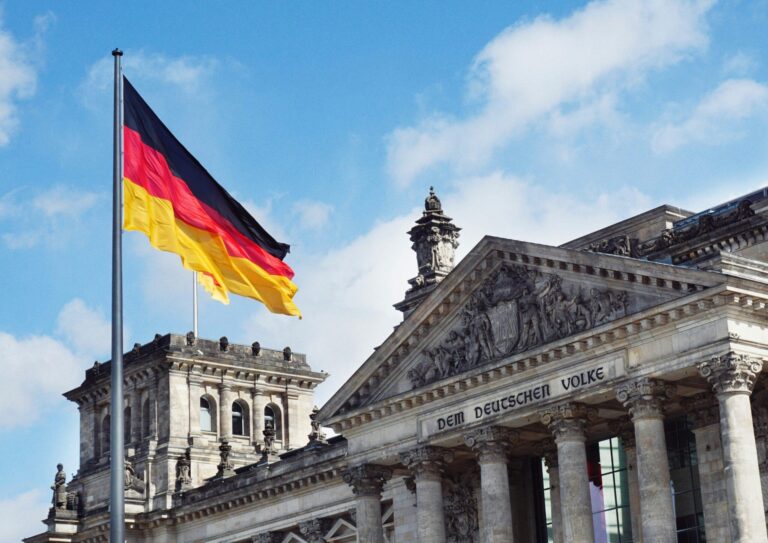Germany’s Consumer Expenditure Challenge in an Uncertain Economy
In the context of escalating inflation and ongoing global economic instability, German consumers are increasingly prioritizing savings over spending. This behavioral shift is reflected in a significant decline in discretionary purchases, as households tighten their budgets to cope with rising costs for essential goods like energy and food. Economists warn that this trend could further complicate Germany’s economic landscape, perhaps leading to a slowdown in growth.The inclination to save stems from a quest for financial security amid unpredictable future economic conditions.
The hesitance to spend is notably pronounced across various sectors,indicating a notable change in consumer priorities. The most affected areas include:
- Apparel Retail: Consumers are purchasing fewer non-essential clothing items.
- Culinary experiences: Restaurants are witnessing reduced foot traffic as people opt for home-cooked meals instead.
- Travel and Recreation: Many individuals are delaying vacations due to financial concerns.
| Sectors | % Change in Consumer Spending |
|---|---|
| Apparel retail | -15% |
| Culinary Experiences | -20% |
This change raises vital questions about the resilience of Germany’s economy, which has historically thrived on strong consumer spending. Analysts caution that an extended period of frugality could hinder recovery efforts and create additional challenges for businesses hoping for a resurgence in consumer confidence. As government officials and financial analysts closely observe thes trends, attention remains focused on potential strategies aimed at encouraging expenditure while ensuring household financial stability.
Initiatives to Encourage Consumer Spending in Germany’s Saving-Oriented Society
To effectively boost consumer expenditure within Germany, initiatives should aim at cultivating a more vibrant shopping culture. Financial institutions can play an essential role by implementing incentive programs, which directly reward spending rather than saving. These might include benefits such as cashback rewards, discounts on everyday essentials, or loyalty points redeemable against larger purchases. Furthermore,<strong targeted marketing campaigns,focusing on experiences rather than mere products may resonate more profoundly with consumers by emphasizing travel opportunities,dining experiences,and entertainment options that appeal emotionally.
Additonally,<strong policymakers can enhance available credit options temporarily, making it easier for consumers to finance larger purchases through simplified loan applications or lower interest rates—empowering households to invest considerably from home renovations to tech upgrades. Organizing community events promoting local businesses can also serve dual purposes: stimulating spending while simultaneously bolstering the local economy through vibrant markets or pop-up shops that engage consumers actively.
Expert Advice for Boosting Demand in Germany’s Economy
A comprehensive approach is recommended by industry experts when it comes to stimulating consumer expenditure within germany—one that combines innovative marketing strategies with insights into consumer behavior patterns. Brands should strive towards establishing emotional connections with their audiences by highlighting sustainability practices and locally sourced products; modern consumers increasingly seek brands aligned with their values.
Incorporating storytelling into marketing efforts can foster loyalty among customers—especially younger demographics—and encourage them toward increased spending habits.
Additonally,<em businesses should harness technology effectively during this process;</em here are some key strategies worth considering:
- Tailored Marketing: Utilizing data analytics allows companies to customize marketing approaches based on individual preferences.
- Loyalty Promotions: Offering limited-time discounts via online platforms creates urgency among potential buyers.
- User Experiance Enhancement: Engaging customers through memorable interactions either online or offline adds value beyond just transactions.
- Community Involvement: Partnering with local charities enhances brand visibility while strengthening community ties.
.
.
.
.
.Key Performance indicator Description Customer Acquisition Cost Cost incurred per new customer acquired. Conversion Rate Percentage of visitors who complete purchases. Average Order Value Average amount spent per transaction. The Path Ahead
As Germany navigates its complex economic environment characterized by rising inflation rates alongside fluctuating consumer confidence levels—the challenge remains clear: how best can we promote increased expenditures over savings? With growing savings rates coupled alongside wavering sentiment amongst shoppers—the pressing question becomes how do we stimulate demand without exacerbating existing uncertainties? As the nation strives towards reigniting its economic engine—the relationship between shifting behaviors amongst consumers versus overall health will prove crucial moving forward.
Both governmental bodies along retail sectors must tread carefully through these turbulent waters leveraging innovative tactics designed not only inspire shifts towards greater expenditures but ultimately bolster growth & recovery efforts ahead! Only time will reveal whether or not they succeed reversing current trends restoring vibrancy back into this once-thriving consumption-driven economy.
- Community Involvement: Partnering with local charities enhances brand visibility while strengthening community ties.




